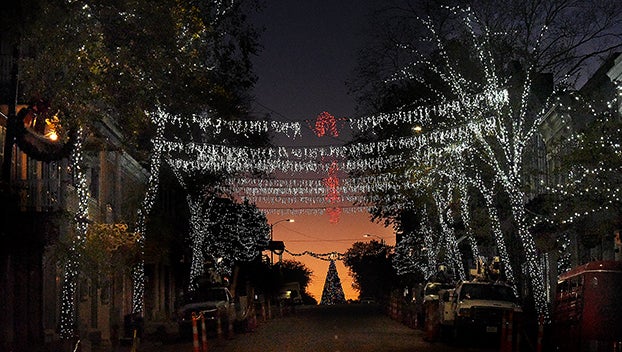Wilkinson County COVID-19 infection rate highest in state
Published 8:48 pm Friday, March 27, 2020
|
Getting your Trinity Audio player ready...
|
With nine confirmed cases of COVID-19, Wilkinson County has the highest infection rate in the state.
Friday morning, the Mississippi State Department of Health reported 579 confirmed cases of the new coronavirus.
Although most of the confirmed cases are in larger metropolitan areas, rural counties may be suffering the most because of their smaller populations.
With less than 9,000 people, Wilkinson County ends up having a higher infection rate than more populous counties like Desoto County and Hinds County.
Looking at the number of cases per 10,000 residents, Wilkinson County tops the state with 10.4 cases/per 10,000 people.
Of the state’s 82 counties Desoto County, in the Memphis metro area, leads the state with 63 cases. Hinds County, in the Jackson metro area, follows closely behind with 50 cases. Harrison County on the Gulf Coast comes in third with 34 cases.
Because of their large populations, metro counties have a lower infection rate. For example, Desoto County, with 184,945 people, has an infection rate of 3.4 cases/per 10,000 people. Hinds County, with 231,840 people, has an infection rate of 2.2 cases per 10,000 people.
Other rural areas of the state are also experiencing sizable infection rates.
Coahoma County in the Delta with 23,154 residents and 18 COVID-19 cases has an infection rate of 8.1 cases/per 10,000 people.
With a population of 22,015 people and 15 cases, Tippah County in the northeast corner of the state has an infection rate of 6.8 cases/per 10,000 people.
The five counties with the highest infection rates (per 10,000 people) are:
- Wilkinson County — 10.4
- Coahoma County — 8.1
- Tippah County — 6.8
- Tunica County — 6.2
- Holmes County — 5.9
State numbers
On Friday, Mississippi had 15 cases for every 100,000 residents. Neighboring Louisiana (population 4.6 million) had approximately 60 confirmed cases per 100,000 people and 2,746 total. New York, where nearly 20 million people live, continues to lead the nation with 194 cases per 100,000 residents and 38,977 overall.
For most people, the new coronavirus causes mild or moderate symptoms, such as fever and cough that clear up in two to three weeks, but also milder cases of pneumonia, sometimes requiring hospitalization. The risk of death is higher for older adults and people with other health problems and some need respirators to survive.
MSDH recently started releasing demographic and hospitalization data, along with case counts.
On Friday, 32% of known COVID cases have needed hospitalization.
Thirty-five percent of cases have been among those aged 60 or older, but 18% of the state’s cases have been among 40-year-olds.
Those aged 60 or older make up 67% of the cases that are hospitalized and all of the deaths that have been reported in the state.
New initiative
On Thursday, Gov. Tate Reeves and the state’s health officer announced they would begin investigations to find people who have been near those testing positive for the coronavirus and will tell those contacts to quarantine themselves,
Reeves said the contact-tracing plan “will allow us to shift from playing defense to playing offense” to try to slow the spread of the highly contagious virus.
Reeves has been facing criticism from some lawmakers and mayors who say he has not been aggressive enough. The Republican governor issued an order Tuesday telling people to keep distance from others and to stay home when possible. But he has not issued a stay-at-home order as some governors have done.
“We are not at the end of this challenge, but we are closer to the beginning,” Reeves said Thursday during a news conference outside the Governor’s Mansion.
The health officer, Dr. Thomas Dobbs, said the contact-tracing plan is based on programs that helped slow the spread of the virus in Singapore and South Korea. Those countries have had widespread testing, though, and that scale of testing is not yet available in the United States. It’s not clear whether the contact-tracing efforts in Mississippi are beginning too late to have much effect or whether the state Health Department and other agencies will have enough people to work on the program.
Dobbs said if health officials find a rapid growth of cases in a particular community, they could seek broad limitations on people’s movements.
Reeves issued an executive order Tuesday that seeks to limit people’s physical interactions. He told restaurants and bars statewide to close their dining rooms and limit service to takeout or delivery. An exception is for dining rooms that would be limited to 10 or fewer people who would keep distance from each other.
The Associated Press contributed to this report.







